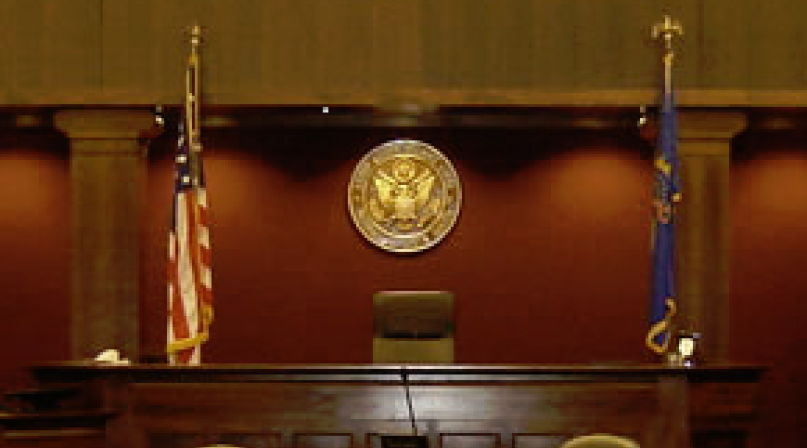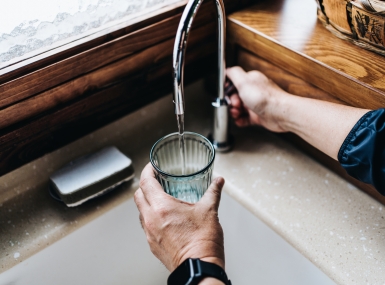Share
Line: | @NACoTweets:13, lucky no. for WOTUS fans. Not so much for everyone else |
Update: The preliminary injunction to halt implementation of the “Waters of the U.S.” rule only applies to the 13 states that filed the original brief, according to North Dakota U.S. District Court Chief Judge Ralph Erickson.
Erickson, who made the first ruling Aug. 27, issued another order Sept. 4, limiting the scope of the injunction to the plaintiff states. The decision, Erickson said in his order, takes into account competing state interests and competing judicial rulings. It was unclear at the time of the initial ruling whether it extended nationwide.
States seeking a preliminary injunctions from the North Dakota District Court were: Alaska, Arizona, Arkansas, Colorado, Idaho, Missouri, Montana, Nebraska, Nevada, New Mexico, North Dakota, South Dakota and Wyoming.
Lawsuits seeking temporary injunctions were also filed in federal district courts in West Virginia and Georgia. In both cases, the courts declined to grant an injunction, claiming they did not have jurisdiction.
The North Dakota court decision is just one skirmish in a larger legal battle on the part of 31 states to have EPA and the Corps of Engineers withdraw and re-write the WOTUS rule. NACo will continue to monitor and report developments as they occur.”
The preliminary injunction to halt implementation of the “Waters of the U.S.” rule only applies to the 13 states that filed the original brief, according to North Dakota U.S. District Court Chief Judge Ralph Erickson.
Erickson, who made the first ruling Aug. 27, issued another order Sept. 4, limiting the scope of the injunction to the plaintiff states. The decision, Erickson said in his order, takes into account competing state interests and competing judicial rulings. It was unclear at the time of the initial ruling whether it extended nationwide.
States seeking a preliminary injunctions from the North Dakota District Court were: Alaska, Arizona, Arkansas, Colorado, Idaho, Missouri, Montana, Nebraska, Nevada, New Mexico, North Dakota, South Dakota and Wyoming.
Lawsuits seeking temporary injunctions were also filed in federal district courts in West Virginia and Georgia. In both cases, the courts declined to grant an injunction, claiming they did not have jurisdiction.
The North Dakota court decision is just one skirmish in a larger legal battle on the part of 31 states to have EPA and the Corps of Engineers withdraw and re-write the WOTUS rule. NACo will continue to monitor and report developments as they occur.”
A federal judge has temporarily stopped EPA and U.S. Army Corps of Engineers from enforcing the new “Waters of the U.S.” rule in at least 13 states: Alaska, Arizona, Arkansas, Colorado, Idaho, Missouri, Montana, Nebraska, Nevada, New Mexico, North Dakota, South Dakota and Wyoming.
U.S. District Court of North Dakota Chief Judge Ralph Erickson granted a preliminary injunction, citing the harm states would likely incur by the rule’s planned implementation on Aug. 28. It is unclear at this point whether the order granting the temporary injunction applies only to the 13 states or nationwide. Judge Erickson is expected to clarify the scope of the ruling.
Currently, the EPA is arguing that the preliminary injunction only applies to the 13 states involved in the case, while others believe the federal ruling applies nationally.
Lawsuits seeking temporary injunctions were also filed in federal district courts in West Virginia and Georgia. In both cases, the courts declined to grant an injunction, claiming they did not have jurisdiction.
“As the rule goes through the judicial process, we will continue to work with the federal agencies to clarify the regulation and implementation process,” said NACo President Sallie Clark. “All of us want clean water, and we must work together to achieve that goal without compromising our public safety and infrastructure responsibilities.”
Counties are responsible for many types of infrastructure that could be affected by the rule, including roadside ditches, storm water drains, flood control channels and other systems designed to keep water away from people and property. Counties own and maintain 45 percent of the nation’s road miles and one out of every 10 bridges. Counties and other local governments are also charged with upholding federal, state and local regulations that protect water resources.
“This has always been an issue of practicality for us. We hope the EPA and the Corps will work collaboratively to provide more precise guidance that will help us protect water and keep our residents safe,” Clark said. “However, we also believe in the appropriate level of state and local control.”
Since the agencies unveiled the proposal in 2014, NACo testified before congressional bodies four times and has steadfastly advocated for more collaboration and greater clarity



